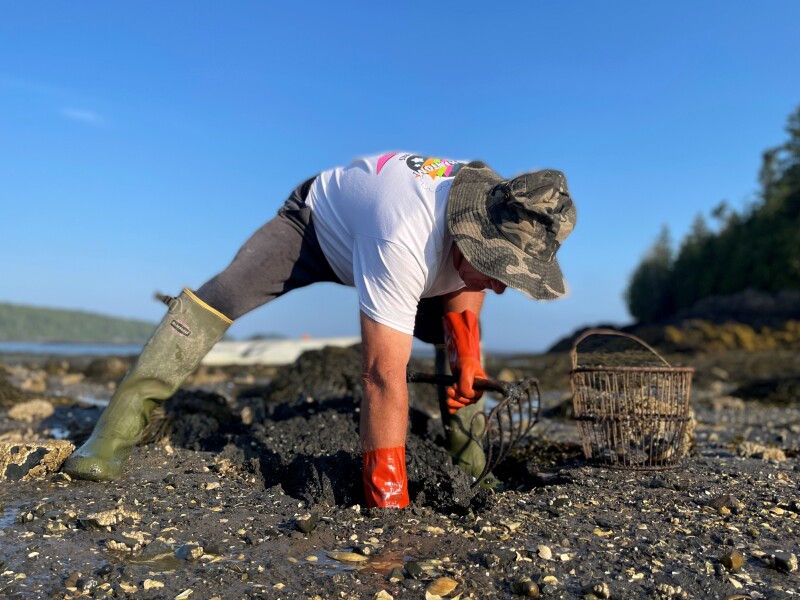For people in the world of big tides, digging clams is a way of life passed through generations.
Heavy rains have closed the clam flats of Lubec, Maine, for a week. They tend to overwhelm local sewage treatment plants, and generally, it's a precaution more than a result of testing. “I dug after a big rain and sold the morning they closed it,” says Danny Fitzsimmons. “Before that, I dug 27 tides in 21 days. Not bragging, it's something with being self-employed, you don't take a day off, because nobody tells you too.”
Down a rough dirt road with “no trespassing” signs that everyone ignores, a handful of Lubec clammers launch their boats ahead of the low tide and fan out around the shores of South Bay to see what they can find. “The flats are still closed near town,” says Fitzsimmons. “But I think we’ll do alright up here.”
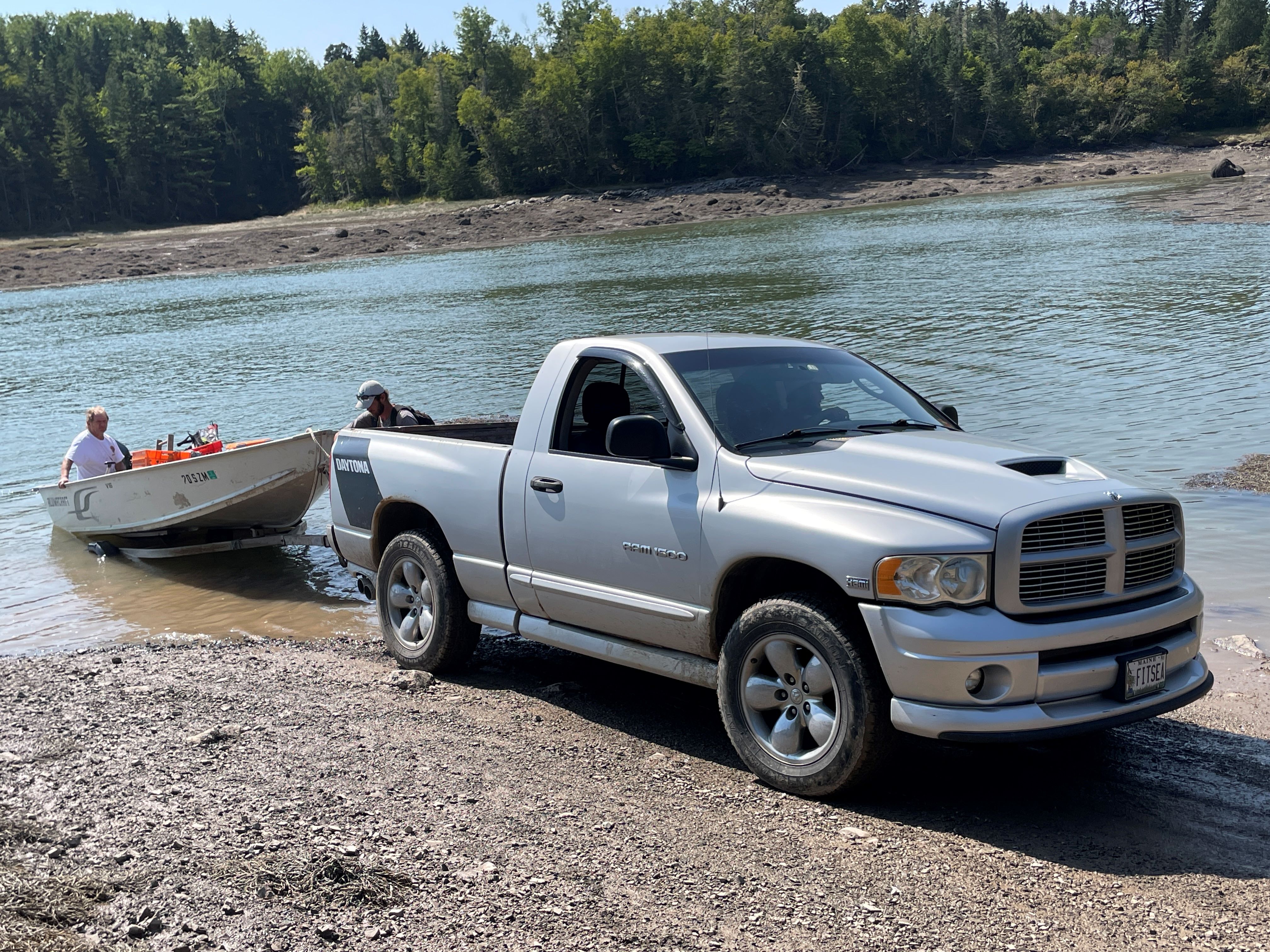
Like many clam diggers in Maine and the Canadian Maritimes, the 60-year-old Fitzsimmons learned from older folks. “I used to go with my father, and there was a guy who used to come by our house with a wheelbarrow. One day I jumped on and he took me down to the flats and brought me back.” Joining Fitzsimmons today are 39-year-old Joe Davidson and 24-year-old Chris Trott, also known as “Hammer” or “Sponge Bob.”
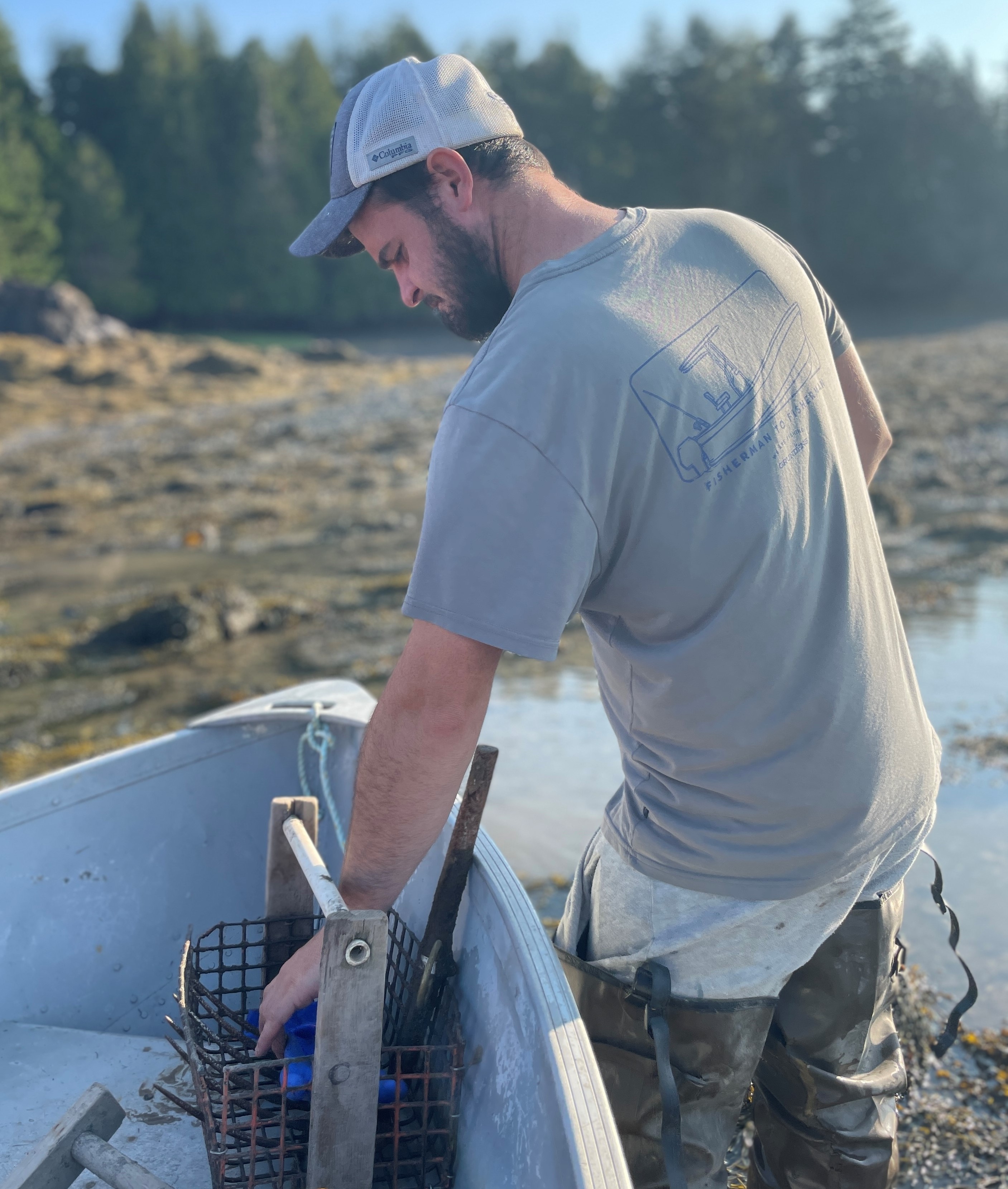
“Danny took me when I was 7,” says Trott. “Danny taught me clamming and Joe taught me fishing.” Trott recalls driving every day to Joe Davidson’s house in Cutler and asking if he could go lobster fishing. “When I was in High School, I asked every day. Finally, I asked his boss, and they took me the next week.
“You didn’t get no free passes did you Trottsie?” says Davidson. “No, they asked me to do things I could not do. One time he told me to chuck a trap up on top of the wheelhouse. I chucked it as hard as I could and it came right back and smoked me in the face.”
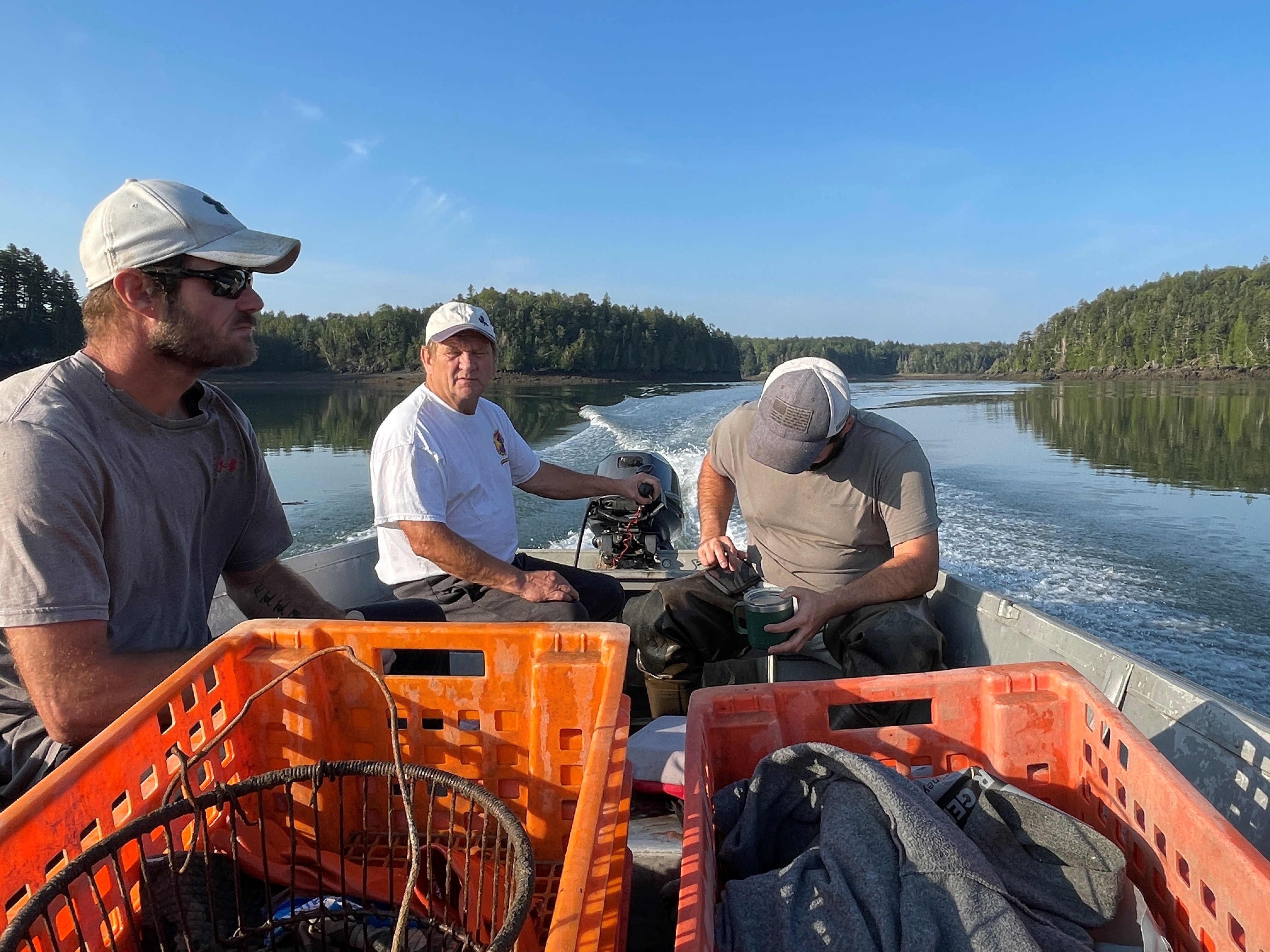
While they share their history and memories, they dig. Each man carries a clam hack, or hoe, and a roller. Roller used to be made of wood and hold about a peck or two, or a quarter to half a of a bushel. Now, they are generally made from lobster trap wire, though Fitzsimmons uses a round wire basket. “Usually, about three of these will fill a bushel. About 50 pounds,” he says as he drives his hack down into a patch of sandy mud. “You look for their holes,” he says. “Worms make round holes. Clam holes are kind of oval shaped.” Fitzsimmons points to a scattering of oblong holes in the mud, each about half an inch at their widest. First, I dig in front of them, then I go behind the holes and get the clams.” He pulls back a clod of mud and grabs two or three clams most of the time. As do Trott and Davidson.
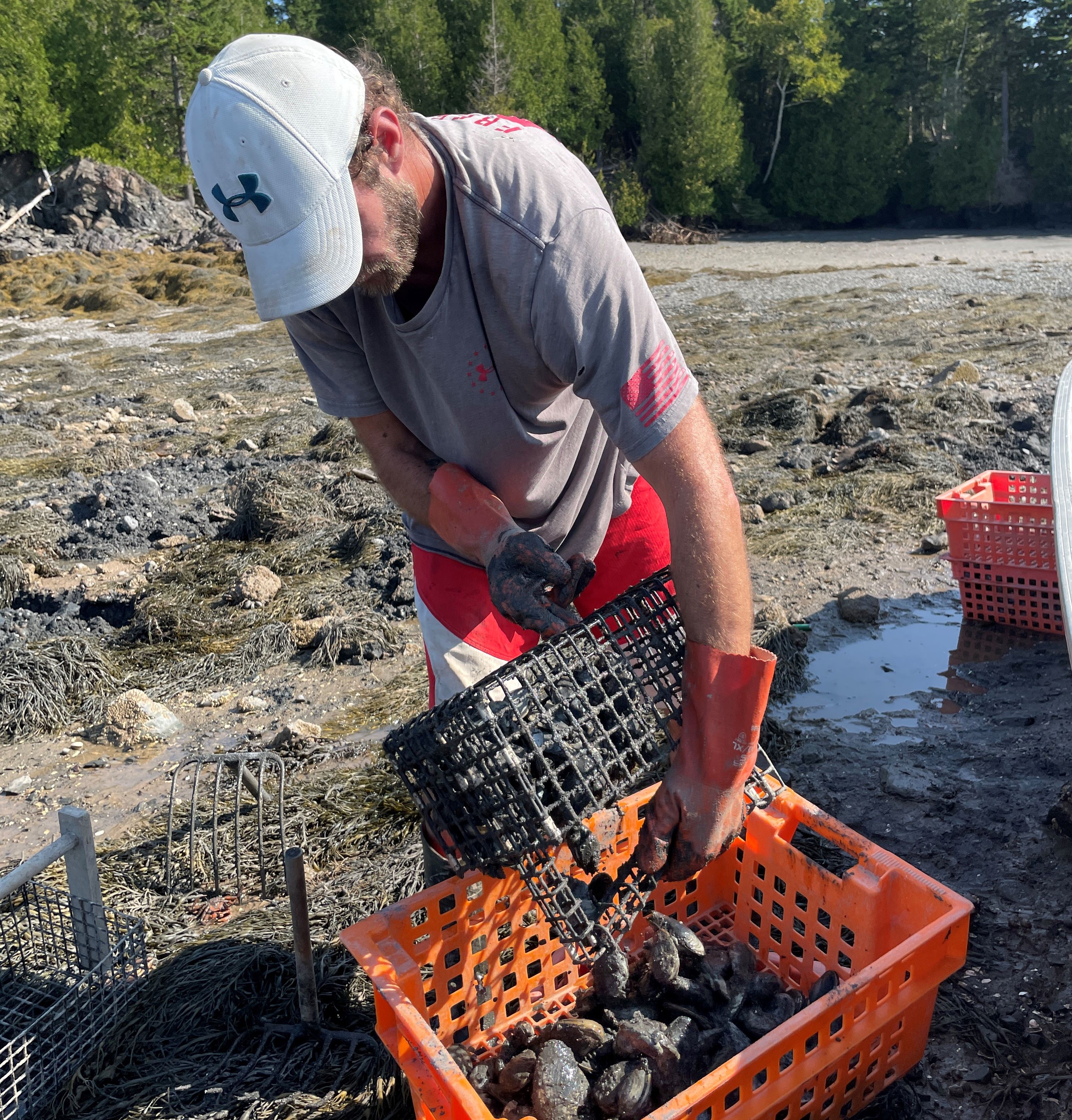
“We are all usually within a peck of each other,” Fitzsimmmons says. “The last days we dug before today we were within a couple of pounds.” Each man keeps track of his own clams. When they have a roller full, they carry it to the boat and pour it into a rectangular bushel crate made of orange plastic. Each makes his own stack. “We average about two and half or three bushels a day,” says Fitzsimmons.
The sun rises higher, and the day warms up. The diggers cover their clams with an empty crate or keep them in the shade of the boat that now lies high and dry on the rocky beach. Fitzsimmons takes his basket and a roller and works his way far down a bar exposed by the ebbing tide. “Pretty good down here,” he calls to Davidson and Trott, but they work the other direction digging their way down the beach toward the water.
There are different style of digging, they explain. “Danny used to go hand-pulling,” says Davidson. “He’d just reach down in the mud, no hack. When he did that he was crushing them—5-6 bushel a tide, and they didn’t put’m in crates they put’m in urchin totes,” he says, referring to plastic fish totes that hold about 100 pounds.
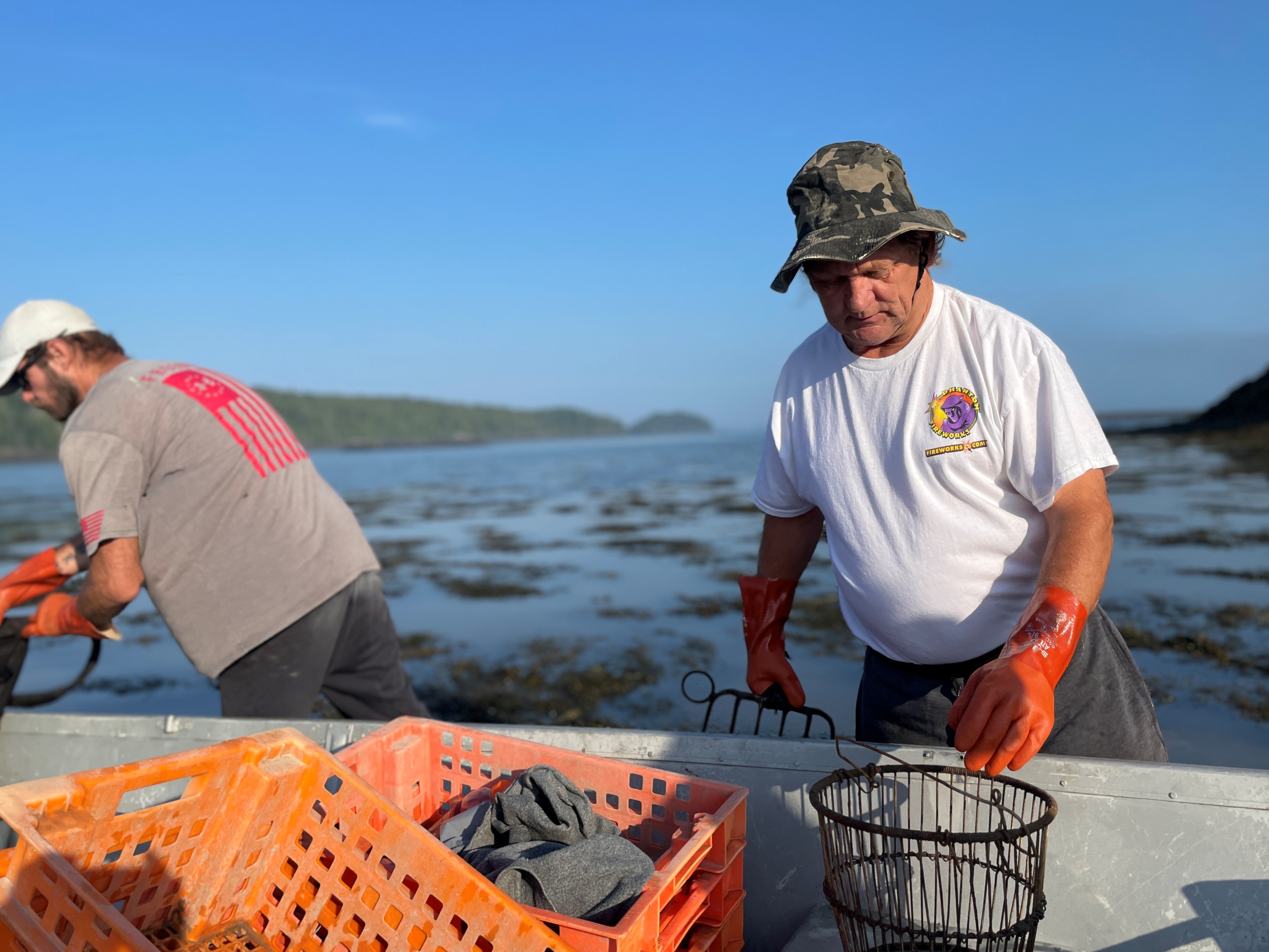
When a digger finds a vein of clams, and just keeps digging along, leaving a trench behind him, they call it “plowing,” when they wander around looking for holes and digging one place then another, it’s “spot digging.”
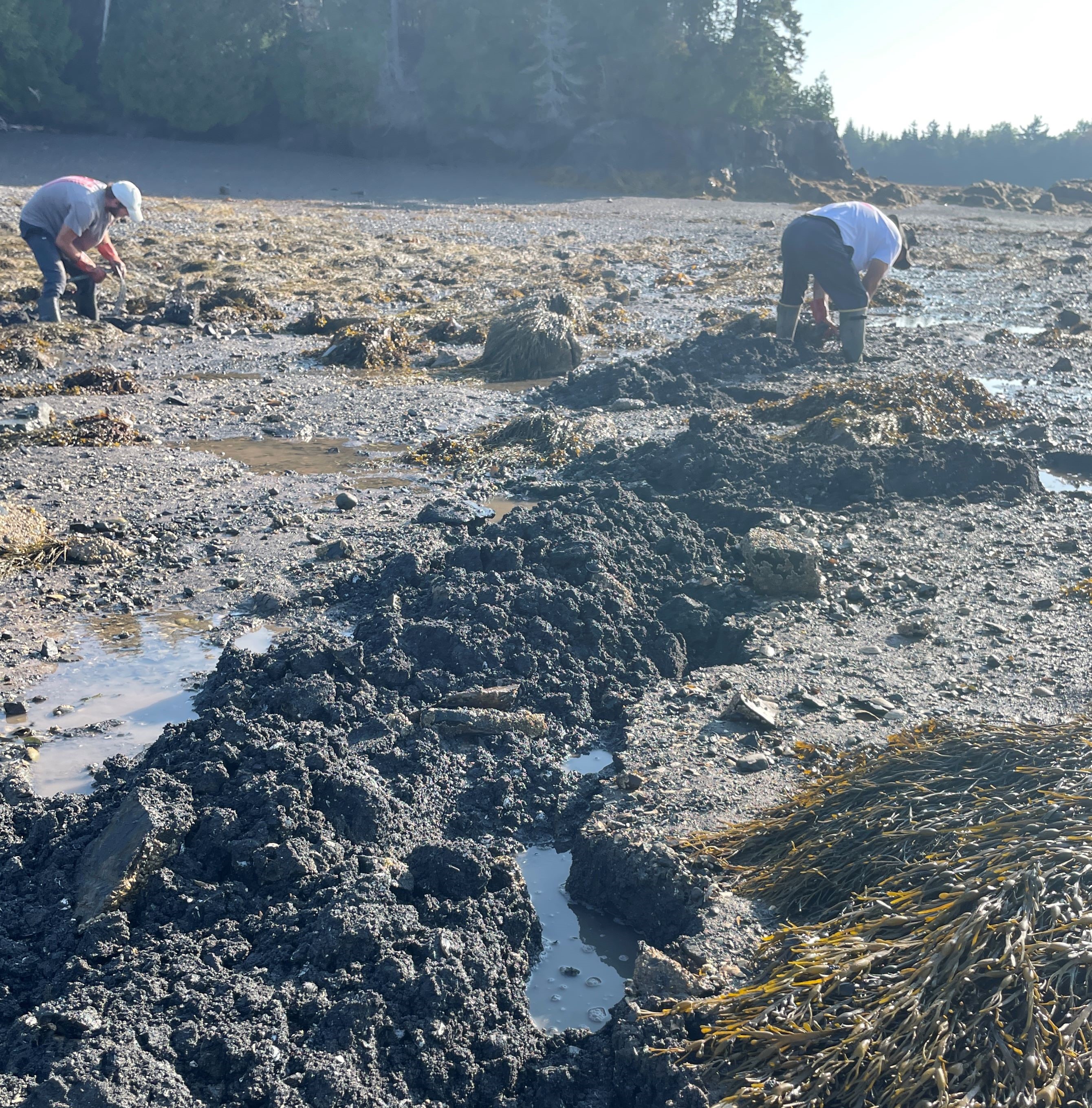
“There’s a guy named David Brown,” says Trott. “I was digging and he was walking around spot digging. He can walk around the beach and looks like he hardly bends over, but he kills’m.” Fitzsimmons notes that he seldom does any hand picking anymore.
“The beaches change,” he says. “Sometimes they harden up. Down to Mowry Beach the mussels are growing and spreading down toward South Lubec. I’ll tell you, my father-in-law and a bunch of guys from around here came back from Korea in the 50s, and they figured the clamming would be great, because nobody dug much during the war. But they could barely dig two bushel. There was nothing here. You have to dig the flats, it’s like roto-tilling a garden. You have to loosen up the mud so they can grow.”
Davidson and Trott voice agreement. Clamming makes clamming better. While they talk they dig, and while they mostly dig in silence, the talk is important. There is no website that tells diggers which beaches have been dug, or when, that information gets spread by word of mouth. It’s important for clammers to share what they know and what they’ve heard, so that they don’t waste time going to places that have already been harvested.
“Some young guys came and plowed this beach last winter,” says Fitzimmons. “You can still see where they dug.” But he and his crew are loading up. According to Fitzsimmons the clams they’re getting were deeper in the winter, but have now come up, and they run big.
“I hate ringing clams,” says Davidson, and they all agree. The softshell clams, Mya arenaria, dug in Maine have to be 2 inches long, and clammers often have a 2-inch ring attached to their clam hoe or roller. When in a patch of borderline clams, they must take the extra step of measuring, or ringing them.
With the tide turned flood, Fitzsimmons works his way on off the bar. “When I got out of high school, I got married young,” he says. “I got a job in the grocery store. I used see guys come in from clamming and cash checks for more than I made in a week. Finally, my mother said, ‘Danny, you’re young and strong. You should go out there on the flats and dig clams.’ It surprised me. I figured she would say it’s better to have a steady paycheck. But really, she’s the reason I’m out here.”
As the tide reaches the boat and floats it, Fitzsimmons and his crew, slosh their crates in the water rinsing the clams, and then stack them separately in the boat. Back on the gravel beach they fill out tags that will follow the clams through the supply chain in case anyone gets sick. Word is out that the price is $3.00 a pound. And they each have over 100 pounds for six hours of their time. At H&D Seafood in Lubec, they join other clammers unloading and selling. A Maine Marine Patrol Officer, Alison Gauvin, walks around the floor as crates are stacked and weighed. “I look at the size,” she says. “Make sure their clams are 2 inches and that they aren’t coming from closed areas. I make sure the diggers have licenses. They have to have a state license and a town license.”
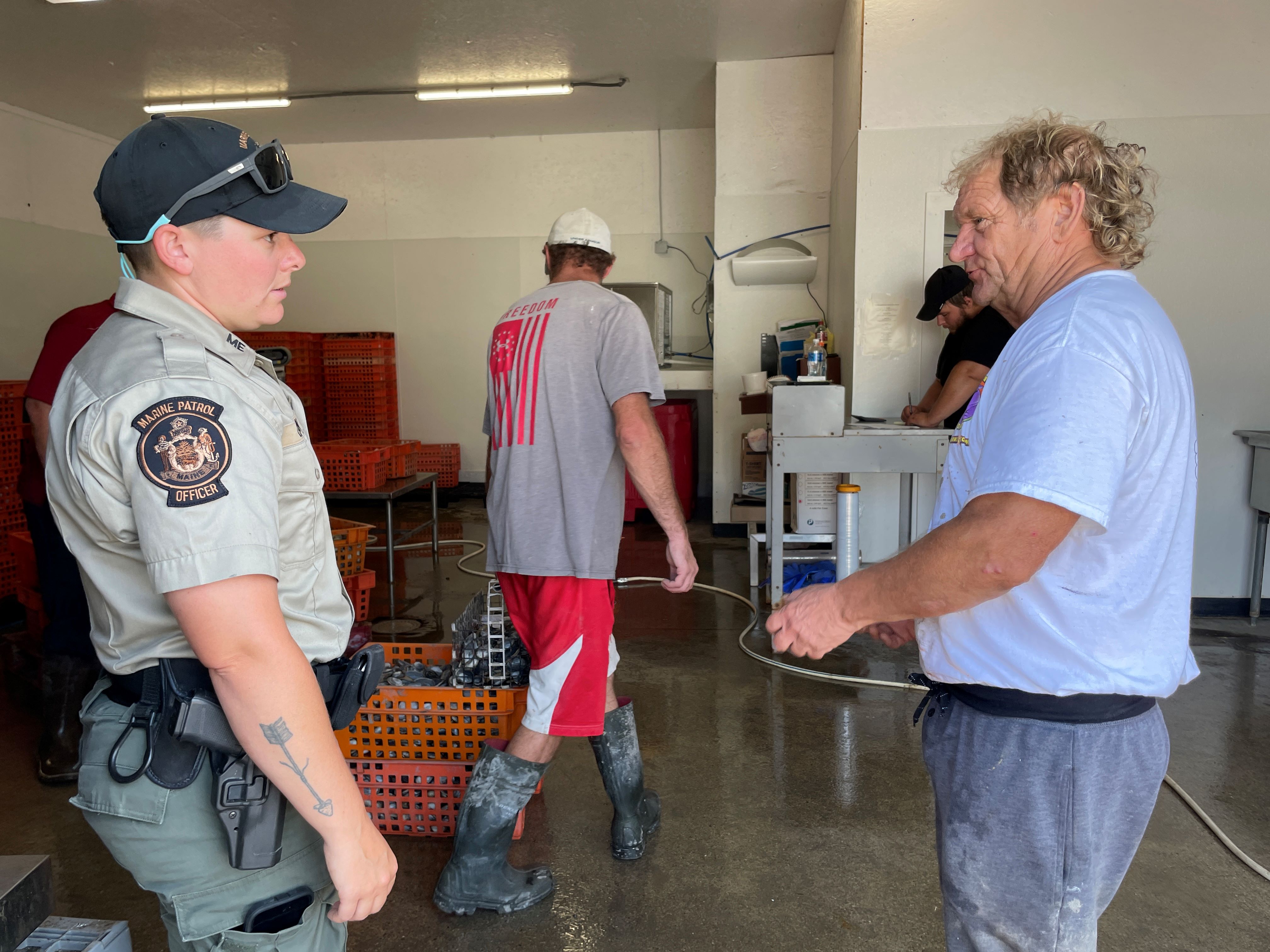
Maine clams are managed by the state and the towns. In Lubec for example, diggers have to be a Lubec resident to get a license. “If we have extra licenses they can go to non-residents,” says Town Clerk, Penny Sprague. “But we have five people who are grandfathered to dig in Lubec, so they get the licenses first.”
Lubec commercial clam diggers pay $133 for a state license and anywhere from $100-$300 for a town license. “It’s $100 if you sign up to do shellfish conservation hours, which is around 4 hours of service and two meetings,” says Sprague. “It’s $300 if you don’t do the conservation hours.”
“Last year I paid the $300,” says Fitzsimmons. “This year I only paid $50 because I did the hours and went to the meetings, and its half price when you hit the 60 mark.”





